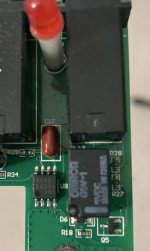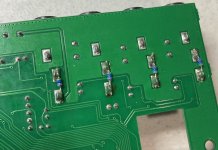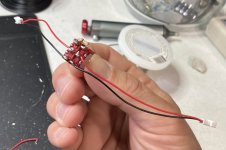Big Monk
Well-known member
Ladies and Gents.
I have no schematic from Joyo as of yet but maybe the collective can help me out.
I found out the hard way last night that my Joyo switcher has an input buffer. Plugging the Monk Face prototype into it made the fuzz sound like shit. No cleanup, all high end gone. Took the fuzz and plugged it straight in and it was glorious as expected.
I already have a specially tailored buffer on the wah to play nice with the fuzzies and in searching the web, this is a known issue with the Joyo.
So, I opened it up and Lo and behold:

I’d really love to put the buffer on a switch but with the surface mount stuff, I may need to just pull it all out.
I have no schematic from Joyo as of yet but maybe the collective can help me out.
I found out the hard way last night that my Joyo switcher has an input buffer. Plugging the Monk Face prototype into it made the fuzz sound like shit. No cleanup, all high end gone. Took the fuzz and plugged it straight in and it was glorious as expected.
I already have a specially tailored buffer on the wah to play nice with the fuzzies and in searching the web, this is a known issue with the Joyo.
So, I opened it up and Lo and behold:

I’d really love to put the buffer on a switch but with the surface mount stuff, I may need to just pull it all out.







